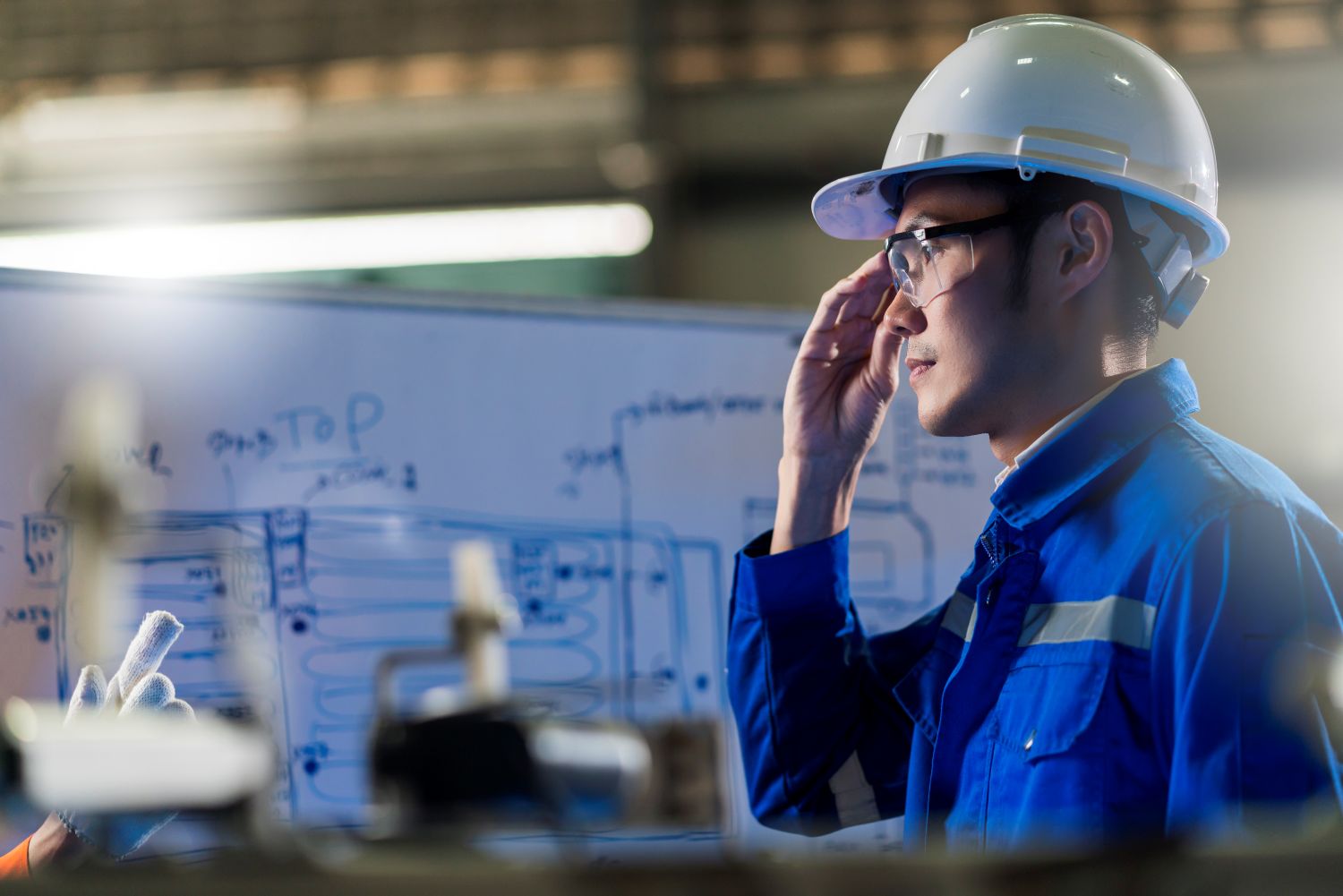How to bridge the growing skills gap with a strong reskilling program.

As industries evolve, the demand for skilled workers is more significant than ever, but the skills needed continue to change. Companies must prioritize upskilling and reskilling to stay competitive and meet these demands.
When we talk about sustainability, we’re not just talking about natural resources; we also include our most valuable asset—our workforce. A thoughtful people strategy prepares organizations for the future while fostering employee growth.
This article explores how businesses can align workforce strategies with technology and sustainability by emphasizing upskilling and reskilling to build a more sustainable workforce.
A Sustainability Leader – The Automotive Industry
Machines. Electricity. Computers. Internet. Artificial Intelligence. Each of the five industrial revolutions has brought forth changes that decreased human effort while increasing output. Accomplishing more with less is the goal of technology, after all. Less time, less investment, and fewer people. But does this mean we, as employers, must “discard” the people we no longer need?
Of course not.
One of the best examples of this is the invention of the assembly line by Henry Ford in 1913. Previously, entire automobiles were made by one person, one at a time. Devising a system where each worker performed one task as the car moved along the line caused productivity to skyrocket, opened up many new jobs and made the automobile much more affordable to the average person.Not only that, the Ford Company immediately had to more than triple its workforce.
Today, the automotive industry is again on the cusp of another revolutionary change.
The Biden administration has set an ambitious goal for the American auto industry: electric vehicles should account for 50% of all new vehicle sales by 2030. Nearly the entire U.S. auto market has responded quickly, positioning around this aggressive goal with an equally challenging timeline. This is a true industry revolution, and automakers must figure it out — or get out — as the world doubles down on environmental concerns surrounding their industry.
This wide-scale rethinking of the automotive industry is forcing major changes in workforce needs. For example, the design and manufacture of these vehicles requires knowledge of:
Power Systems
Control Systems
Mechanical Systems
The massive and growing body of data (1-2 terabytes per car per day) means that tech skills are needed:
Data analytics
Cyber security
Machine learning
And all those EVs on the road will fuel the demand for:
Repair and maintenance technicians
Charging station installers

The need for human skills on the assembly line has changed dramatically. But, as before, we can adapt. A report from the World Economic Forum finds that 95% of the most immediately at-risk workers can be reskilled into good-quality, higher-wage jobs. Without reskilling, only 2% of workers would have an optimal opportunity to transition to new jobs – and 16% would have none at all.
To meet these needs and to assist with the lightning-fast reskilling that’s needed, ManpowerGroup is hard at work creating both educational opportunities and industry partnerships to close the gap.
In Europe, we’re partnering with the InnoEnergy Skills Institute to help upskill up to 800,000 workers in the regional battery supply chain by 2025. In the U.S., we’ve teamed up with Tooling U-SME to offer an Electric Vehicle Fundamentals pathway for our associates and consultants.
While it can be easy to “spiral out” on what the world will look like in ten years, employers need to dedicate time to figuring out what immediate efforts can move the needle on a day-to-day basis.
Change Will Affect Us All
Why not just replace a redundant worker with someone who has the right skills? For the same reason, you don’t buy a new computer every time you get an update. What you have is perfectly functional, it just needs a reset.
The problem? Only half of workers will have access to adequate training on their own, partially because they may not know exactly what skills to train for, and often due to a lack of money and time.
According to the World Economic Forum’s Future of Jobs report, 60% of the global workforce will need upskilling and reskilling before 2027. A McKinsey report finds that reskilling will be particularly needed in operationally intensive sectors, such as manufacturing, transportation, and retail.
How to Ensure No One Is Left Behind
Recognize that, while new technology will create new jobs, there will be a catch-up period. Here are some tips:
Plot how technology will change the shape of your workforce. Make a roadmap. (use AI to help with this!)
Include everyone on your map – how will their role need to change? Share it.
Line up investments and assessments on this initiative. How will upskilling be achieved and at what cost? Remember that short-term productivity loss may translate to long-term gains in improved retention and agility.
Recycle, don’t discard talent. Once this becomes your demonstrated policy, you’ll see improved morale and lower turnover. You’re also likely to see increased interest from candidates.
Employ DE&I tactics to ensure workers want to stay.

Final Thoughts
Adopting a zero-waste mindset for your current workforce makes sense ethically, logistically and financially. A study by the World Economic Forum found that closing the skills gap by upskilling employees could add $6.5 trillion to the global GDP and create 5.3 million net new jobs by 2030.
However, a complete plan does not really exist, as technology and sustainability standards will continue to change even as we work to adapt to the current state. What IS CRITICAL is rapidly obtaining knowledge to move forward, making a plan, and taking AT LEAST the first step into putting it into action.
Discover how Manpower Vietnam can help close your skills gap while engaging your workforce in the process.

